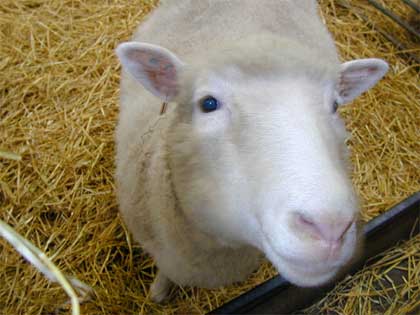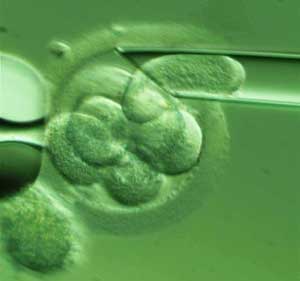July 5 marks the 10th anniversary of the birth of Dolly the sheep in Scotland, which shocked the world as the first cloned animal.
Her arrival sparked a wave of hopes, concerns, and an ongoing ethical debate that remains unresolved to this day.

Dolly the sheep (Photo: edge.org)
The question arises: what have scientists achieved from the creation of Dolly?
“Where has Dolly taken us?”, Dr. Sue Mayer, a member of GeneWatch UK, said. “The biggest concern is that she has led us into a dead end.”
“Instead of finding the root causes of diseases, we are pursuing quick-fix treatments that may never yield results.”
“And she has opened a new avenue in asexual reproduction, a door that scientists are trying to open while we should really be locking it tight.”
 |
|
Somatic Cell Nuclear Transfer method – Photo: sut.ac |
The method leading to Dolly’s birth is called somatic cell nuclear transfer, which has changed little over the past decade: an egg is extracted, and its nucleus – the DNA information that constitutes life – is removed.
This nucleus is replaced in vitro with a nucleus taken from the animal being cloned. The reconstructed egg is then placed in a chemical dish to divide. A few days later, it will develop into a sufficiently large cell cluster to be implanted into the womb of a surrogate mother.
Dolly, born at the Roslin Institute in Edinburgh, was named after Dolly Parton, a country singer known for her ample bosom, as the cloned cell was taken from a sheep’s mammary gland.
Her laboratory name was 6LL3. It was later discovered that this same group, led by Ian Wilmut, also created two sheep from embryonic cells.
Therefore, to be precise, Dolly is the first mammal to be successfully cloned from a mature cell.
Following this breakthrough, a series of other cloned animals were born: horses, bulls, pigs, mice, rabbits, cats, and dogs…
However, the failure rate of eggs is quite high, and among successful embryos, many are flawed, as evidenced by Dolly’s early death, which is a clear warning to any scientist attempting to clone humans.
The cause is believed to be incomplete or damaged genetic material during transfer. As a result, the operational machinery is faulty – genes do not turn on or off as they should during the complex process of protein creation.
So if cloning is so complex, costly, and risky, why bother? The appealing reason is its potential in medicine.
A cloned animal in the lab, such as a mouse, can become a powerful tool for experiments. And a farm animal can be altered and cloned to produce rare pharmaceutical proteins in its milk – Dolly was created for this purpose.
But the biggest reward is to clone embryonic stem cells, the primitive cells of embryos that can develop into any tissue in the body.
Researchers believe that embryonic stem cells will someday become regenerative tissues capable of repairing damaged brain cells, nerves, liver, kidneys, and other organs destroyed by disease. Therefore, if these stem cells are the DNA version of the patient, they will not be rejected by the immune system.
At this point, cloning embryonic stem cells for patients is still a distant dream. The only scientist who claimed success was Hwang Woo-suk from South Korea, who was later exposed as a fraud earlier this year.
Many countries have enacted laws regarding cloning after the Raelian sect claimed in 2002 to have created the first cloned child. This claim remains unverified, and most scientists are skeptical of it. Nevertheless, many speculate that the birth of the first human clone is only a matter of time.
M.T


















































